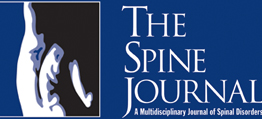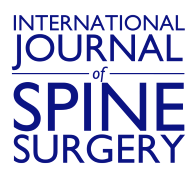
Kudos to Sasso et al. for their diligence in presenting the 7- and 10-year clinical results of single-level Bryan Disc cervical arthroplasty and anterior cervical discectomy and fusion (ACDF). Level 1, prospective outcome data on 47 patients from a single center of a multicenter FDA IDE trial were assessed with regard to neck disability index (NDI), visual analog scale (VAS) neck and arm pain scores, and reoperation. Data was available for 89% (42/47) of patients at 10 years. At 10 years both groups had similar, significant reduction in VAS neck and arm pain scores. NDI scores were also improved in both cervical arthroplasty and ACDF groups, but the arthroplasty group had a statistically significant difference in improvement as compared to the ACDF group. At 10 years, reoperations were performed in 9% (2/22) of the arthroplasty patients and 32% (8/25) of the ACDF patients.
ACDF is a frequently performed and familiar surgical procedure developed in the 1950s for the treatment of symptomatic cervical radiculopathy and/or myelopathy caused by degenerative disc disease (1). Through the years the procedure has been modified, and generally the surgical results are considered by most surgeons to be good to excellent. There are two main procedure-specific complications associated with ACDF: pseudarthrosis and adjacent level degeneration (2). ACDF by design eliminates the natural motion between vertebral segments, and has been shown to induce hypermobility and increase stresses at adjacent levels (3-7). Disc arthroplasty was developed to preserve natural spinal kinematics while providing mechanical stabilization after neural decompression and discectomy.
Cervical total disc replacement (TDR) followed shortly after lumbar disc replacement and was introduced in Europe in the 1990s. Early 2000s IDE studies and approvals in the US included the Prestige ST (Medtronic) (8), ProDisc-C (DePuy Synthes) (9) and the Bryan Disc (Medtronic) (10) for the treatment of single level cervical degenerative disc disease. This was shortly followed by the Secure-C (Globus Medical) (11) and PCM (NuVasive) (12) for single level disc disease, and subsequently the Mobi-C (LDR-Zimmer Biomet) (13,14) and the Prestige LP (Medtronic) (15,16) for both one- and two-level disc disease. These US, FDA IDE trials compared TDR to ACDF using allograft and plate in a prospective, randomized fashion measuring standardized outcome and producing Level 1 evidence in over 2,500 patients at over 100 study sites.
Two-year to ten-year data indicate that both TDR and ACDF are effective treatments for symptomatic cervical degenerative disc disease with regard to neck and arm pain, neurological function, and are associated with low complication rates. There is a trend for better early and long-term results with regard to VAS neck pain, arm pain and NDI scores in the TDR patients (13,14,17,18). Treated level range of motion was maintained at approximately 6–10 degrees of flexion/extension and 5 degrees of lateral bending in the TDR patients and eliminated in the ACDF patients (8-18).
Adjacent level degeneration is often considered controversial but has been shown to be less in TDR as compared to ACDF in several studies (11,14,19,20) and similar in other studies (21). Reoperation rates for index level failure or symptomatic adjacent level degeneration have been found to be significantly higher in both one- and two-level ACDF patients as compared to the TDR patients ranging from 3–5% in the TDR group to 14–17% in the ACDF group in studies ranging 2–7 years (11,15,18,22-24) Heterotopic ossification (HO) is a unique complication associated with arthroplasty which appears to increase over time. Rates vary from 0–43% based on the precise definition utilized. Complete HO or solid fusion was seen in approximately 11% of TDR patients in some studies at 7 years (16,24,25). Interestingly, this unique complication to arthroplasty would be considered a successful ACDF surgery.
Both TDR and ACDF are effective treatments with regard to neck and arm pain, neurological function, and complication rates. In appropriate patients, TDR may be the new gold standard in anterior cervical spine surgery as it has been shown to be associated with significantly better pain scores, maintained ROM, less adjacent level degeneration, and less subsequent surgery than ACDF from 7 to 10 years.
To Read The Full Article Click Here




